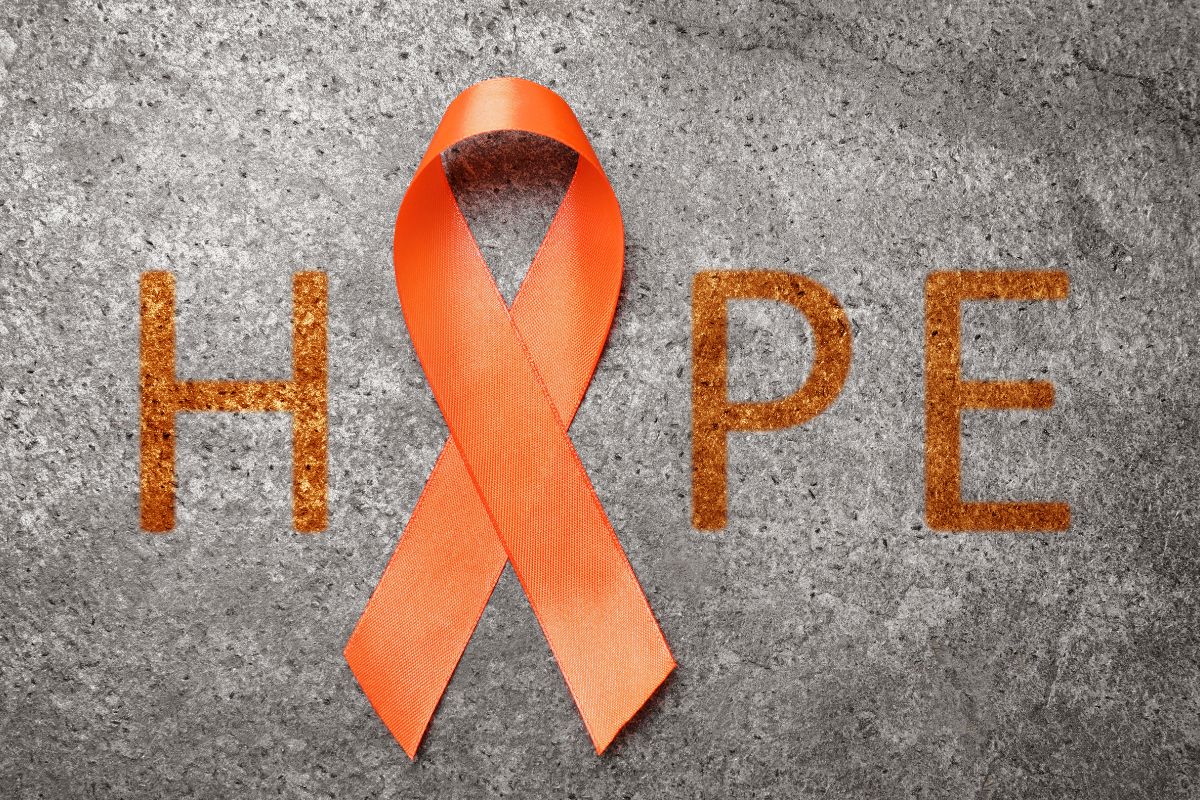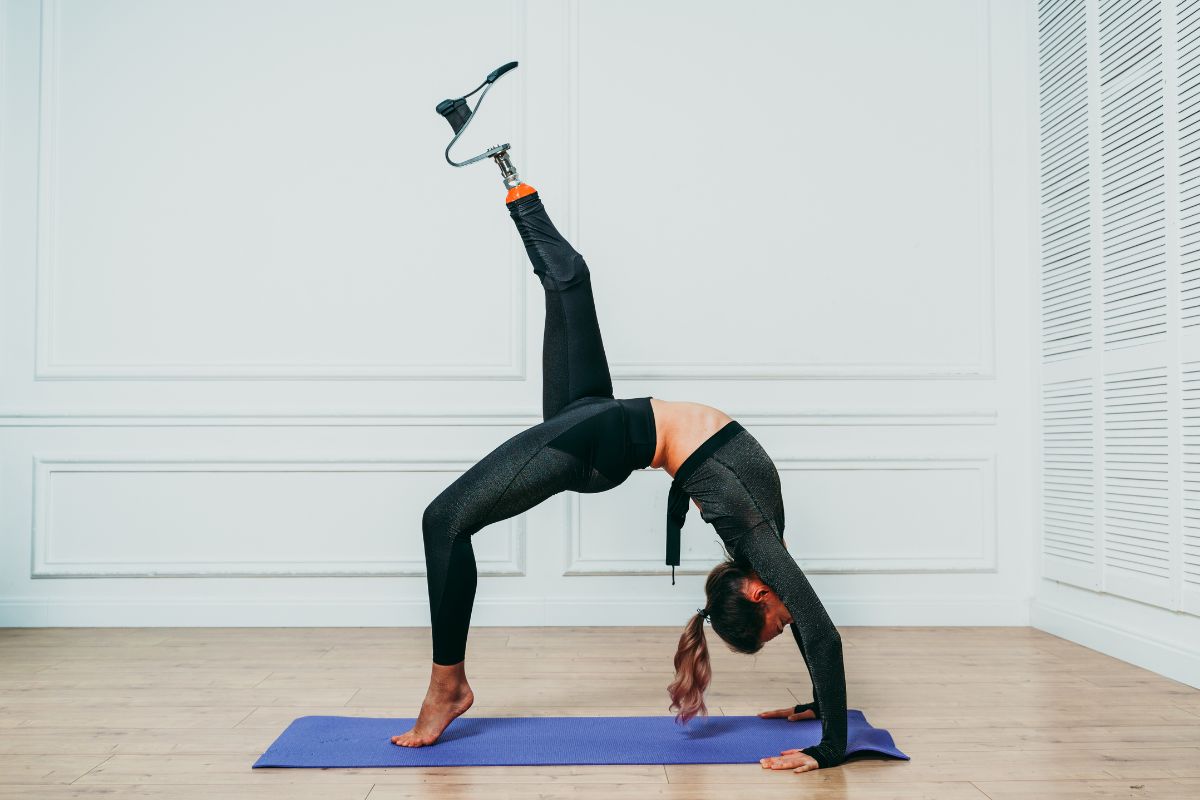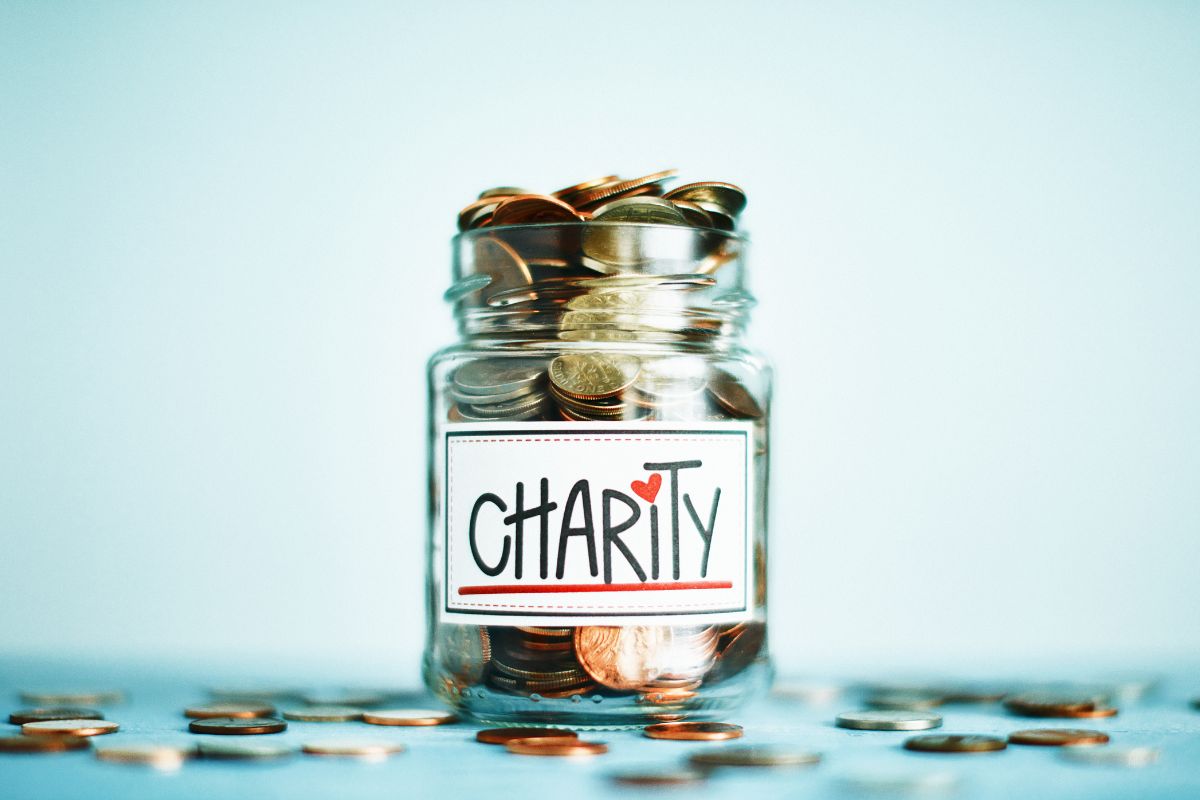April marks a significant month for the limb loss community, as it is recognized as Limb Loss and Limb Difference Awareness Month. This time is dedicated to educating the public about the challenges faced by individuals who have experienced limb loss and spreading knowledge on prevention strategies. If you or someone you know has been affected by limb loss, you're likely familiar with the importance of raising awareness and the symbol that unifies this effort—the awareness ribbon. The ribbon serves as a tool for advocacy and support, fostering a sense of solidarity and recognition within the community.
The color designated for the limb loss awareness ribbon is orange, a hue that commands attention and signifies warmth and optimism. By wearing this distinct orange ribbon, you show support for the millions of people living with limb loss and limb difference and contribute to a larger conversation about accessibility, rights, and inclusion. The Amputee Coalition, a leading organization supporting those with limb loss, actively promotes the importance of recognizing the difficulties amputees face, aiming to empower them through education, support, and community.
Arming yourself with knowledge about limb loss is essential. Whether it's through personal stories or community initiatives, every action taken to elevate this cause aids in breaking down barriers and building a more inclusive society. Remember, your support, symbolized by wearing the orange ribbon, has the power to inspire change and encourage those who are navigating life with limb differences.
Understanding Limb Loss
Limb loss can drastically change your life, encompassing a wide range of causes, prevalent statistics, and the day-to-day reality of living with this condition. Explore what can impact your chances of limb loss, the support available, and advancements that improve quality of life.
Causes of Limb Loss
Limb loss is often the result of pervasive conditions like diabetes and cardiovascular disease; both can lead to complications requiring amputation. Trauma and cancer are also significant causes, while infection and congenital limb difference affect a smaller percentage of individuals.
Statistics and Prevalence
It’s estimated that vascular disease, including diabetes and peripheral arterial disease, accounts for 54% of limb loss cases, while trauma stands at 45% and cancer at 2%. The prevalence of limb loss is increasing, largely due to rising obesity rates and aging populations.
Living with Limb Loss
Adapting to life after an amputation comes with challenges. You may need to learn new ways to perform daily tasks, use prosthetics, and become part of a support community. Access to comprehensive education on self-care is vital for your independence and well-being.
Improving Quality of Life
| Method | Description |
|---|---|
| Prosthetic Devices | Utilizing advanced prosthetic limbs to restore mobility and function. |
| Physical Therapy | Engaging in exercises and activities to improve strength, flexibility, and balance. |
| Occupational Therapy | Learning adaptive techniques and strategies to perform daily tasks and activities independently. |
| Psychological Support | Receiving counseling and support to cope with emotional challenges and enhance mental well-being. |
| Social Integration | Participating in community events, support groups, and recreational activities to foster social connections and reduce isolation. |
| Lifestyle Modifications | Implementing adjustments in diet, exercise, and daily routines to accommodate physical changes and promote overall health. |
Advancements in prosthetic technology and physical therapy techniques have significantly contributed to enhancing the lives of those with limb loss. Prosthetics can now be tailored to your lifestyle, offering more freedom and enabling you to engage in various activities.
Medical Research and Advances
Ongoing medical research continually seeks to better the outcomes for those with limb loss. Innovations range from improved surgical techniques that preserve more limb function to advances in prosthetic design that emulate natural movement.
Psychological Impact of Limb Loss
Awareness of the psychological effects—anxiety, depression, PTSD, and more—is crucial. Mental health support that addresses these issues can help you adjust to limb loss, fostering resilience and improving overall quality of life.
Nutrition and Exercise
Balanced nutrition and regular exercise play a significant role in maintaining a healthy weight, reducing the risk of diabetes and cardiovascular disease complications. They also contribute to the effectiveness of your rehabilitation and the functionality of any prosthetics you use.
The Significance of the Ribbon Color

Awareness ribbons are powerful symbols representing causes and advocacy efforts. Specific colors are linked to particular issues, helping you to recognize and support various health conditions, including limb loss.
Limb Loss Awareness Ribbon
The official color for limb loss awareness is orange. This vibrant color is utilized by the Amputee Coalition during Limb Loss Awareness Month each April. The choice of orange aims to attract your attention and stimulate conversations around the experiences of amputees.
Recognition and Advocacy
By donning an awareness ribbon, you are participating in a form of advocacy, sparking dialogue and increasing visibility for the cause it represents. For limb loss, the orange ribbon serves as a recognition symbol, fostering solidarity and support within the community.
Colors and Associated Causes
Various causes have adopted specific ribbon colors:
- Red: Blood cancer, heart disease
- Yellow: Support our troops, suicide awareness
- Pink: Breast cancer awareness
- Green: Mental health, Native American reparations
- Blue: Bone cancer, heart disease
- Purple: Animal abuse, pancreatic cancer
Beyond Limb Loss: Broader Ribbon Meanings
Colors like orange resonate beyond a single cause. Orange also represents ADHD awareness and animal cruelty prevention. Similarly, pink, while strongly associated with breast cancer, is also used for birth parents.
Ribbon Color Evolution and Trends
Ribbon colors evolve with emerging causes, like green for COVID-19 frontline workers. Online platforms like Etsy showcase handmade ribbons, reflecting current trends and supporting both global and local causes through color.
Community Support and Resources

Your journey after limb loss may seem daunting, but a wealth of support and resources exist to assist you in adapting and thriving. From in-person support groups to online communities and professional healthcare services, you have access to comprehensive support systems that focus on education, advocacy, and rehabilitation.
Amputee Coalition and Support Groups
The Amputee Coalition is a national non-profit organization dedicated to empowering people affected by limb loss to achieve their full potential. They offer a range of support services including peer support, local support groups, and events for education and advocacy. These groups provide a community where you can share experiences and learn from others who understand your situation.
- Peer Support: Connect with trained peer visitors who can offer guidance and a listening ear.
- Support Groups: Local meetups offer a space to discuss challenges and triumphs with those who can relate.
- Events: Engaging in events like Limb Loss Education Day can increase awareness and provide valuable information.
Online Platforms and Social Media
Online platforms serve as a bridge connecting you with others across the globe. Social media groups, forums, and websites are invaluable for finding information, advice, and emotional support.
- Facebook Groups: Find amputee support groups where you can chat and exchange tips with others.
- Forums: Websites like the Amputee Coalition's online forum provide an opportunity to discuss a variety of topics related to limb loss.
- Informational Websites: Reputable sites offer resources on the latest in prosthetic technology and coping strategies.
Healthcare and Rehabilitation Services
Healthcare Services
Medical consultation, surgical interventions, prosthetic fitting, wound care, and pain management are essential healthcare services for individuals with limb loss.
Rehabilitation Services
Physical therapy, occupational therapy, gait training, assistive device training, and psychological counseling support the rehabilitation process for individuals adapting to limb loss.
Post-amputation, your physical recovery is facilitated by professional healthcare services, which may include rehabilitation and physical therapy. These services are tailored to help you regain strength, mobility, and adapt to life after limb loss.
- Physical Therapy: Work with therapists to develop a personalized plan aimed at improving your functional capabilities.
- Rehabilitation Centers: Specialized centers offer comprehensive programs and state-of-the-art equipment to aid in recovery.
Educational Initiatives and Public Speaking
Education is a critical component of community support. Engaging in educational initiatives and attending public-speaking events can deepen your understanding of limb loss and empower you in advocacy.
- Public Speaking: Inspirational talks by individuals who have triumphed over limb loss can foster hope and motivation.
- Workshops and Seminars: Participate in educational sessions that address topics like living with limb loss, advances in prosthetic technology, and self-care techniques.
Awareness and Advocacy Efforts

As you explore the topic of limb loss, you'll find that ongoing efforts around awareness and advocacy are crucial for improving the quality of life for individuals with limb loss or limb difference. These efforts range from designated awareness times to targeted legislation—all aimed at enhancing support and rights for the community.
Limb Loss and Limb Difference Awareness Month
April is recognized as Limb Loss and Limb Difference Awareness Month, an initiative primarily spearheaded by the Amputee Coalition, a prominent nonprofit organization. This month is dedicated to educating the public about limb loss and limb difference, highlighting the resilience of the community, and advocating for the rights and needs of amputees.
- Objective: Increase visibility and understanding of limb loss.
- Activities: Share stories, distribute educational materials, host events.
Campaigns and Fundraising Events
The Amputee Coalition and various other nonprofit organizations orchestrate campaigns and fundraising events throughout the year. These gatherings are designed to foster community, provide support, and raise funds for research, resources, and advocacy campaigns.
- Campaign Examples:
- Step to Accept Challenge: A virtual walk, run, or roll to unite the community and promote acceptance.
- National Advocacy Days: Events organized to meet with legislators and influence policy.
Policy, Legislation, and Accessibility
Ongoing advocacy work focuses on policy and legislation that will enhance accessibility and protect the rights of those with limb loss or limb difference. Efforts include lobbying for improved healthcare coverage, accessibility in public spaces, and employment opportunities.
- Legislative Focus Areas:
- Healthcare: Ensure adequate access to prosthetic coverage.
- Accessibility: Advocate for more ADA-compliant facilities.
- Employment Rights: Support equal opportunities and accommodations in the workplace.
Conclusion

Your awareness and support play a critical role in the lives of individuals with limb loss or limb difference. Wearing the appropriate ribbon color—typically periwinkle—can be a powerful symbol of solidarity and advocacy. Through education, you can contribute to a more inclusive environment, fostering greater understanding and acceptance.
Utilize various channels to spread knowledge about limb loss:
- Support groups and events
- Educational materials and resources
- Social media campaigns
By engaging in these activities, you ensure that the conversation around limb loss and limb difference remains active and productive. Your actions facilitate the connection between those affected and the available support networks.
Remember:
- Limb Loss Awareness Month: April is a significant month to amplify your efforts.
- Empowerment: Your involvement empowers people, promoting a proactive stance on limb health and inclusion.
- Community: You are part of a community that values diversity and strives for the well-being of all its members.
Your efforts in educating others about limb loss, participating in community events, and advocating for accessibility and rights make a tangible difference. Keep advocating, learning, and standing in solidarity with the limb loss and limb difference community.
Frequently Asked Questions
This section addresses common inquiries regarding the symbolism and involvement in Limb Loss Awareness, providing you with quick, essential information.
What color ribbon represents Limb Loss Awareness?
The ribbon color representing Limb Loss Awareness is orange. It symbolizes the courage and resilience of individuals living with limb loss or limb difference.
When is Limb Loss Awareness Month traditionally observed?
Limb Loss Awareness Month is traditionally observed in April each year. It's a time dedicated to educating the public and policy-makers about the challenges faced by the limb loss community.
How can one participate in Limb Loss Awareness activities?
You can participate in Limb Loss Awareness activities by engaging in community events, sharing information on social media, or supporting campaigns that focus on the needs and rights of people with limb loss.
Are there any specific symbols associated with Limb Loss Awareness?
Apart from the orange ribbon, there aren't any universally recognized symbols for Limb Loss Awareness. However, various organizations may have their own symbols to represent the cause.
What organizations support Limb Loss Awareness initiatives?
Organizations such as the Amputee Coalition and other disability advocacy groups support Limb Loss Awareness initiatives. They provide resources, foster community engagement, and work towards policy change.
How can individuals help increase awareness about limb loss?
Individuals can help increase awareness about limb loss by educating themselves and others, advocating for accessibility and rights, and supporting legislation that benefits the limb loss community. Sharing personal stories and experiences can also be powerful in raising awareness.
